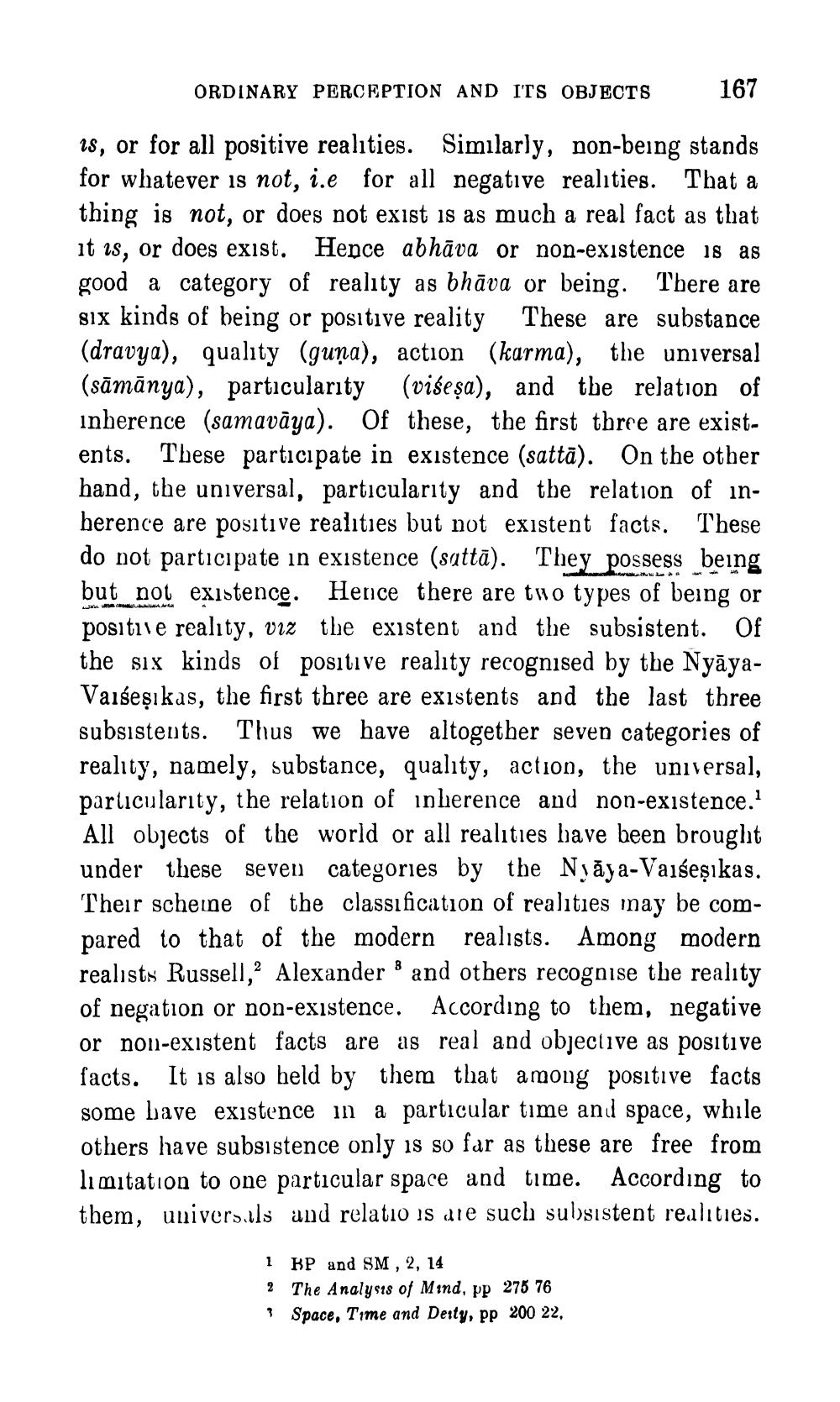________________
ORDINARY PERCEPTION AND ITS OBJECTS
167
is, or for all positive realities. Similarly, non-being stands for whatever is not, i.e for all negative realities. That a thing is not, or does not exist is as much a real fact as that it is, or does exist. Hence abhāva or non-existence is as good a category of reality as bhāva or being. There are six kinds of being or positive reality These are substance (dravya), quality (guņa), action (karma), the universal (sāmānya), particularity (višeşa), and the relation of inherence (samavāya). Of these, the first three are existents. These participate in existence (sattā). On the other hand, the universal, particularity and the relation of inherence are positive realities but not existent facts. These do not participate in existence (sattā). They possess being but not existence. Hence there are two types of being or positive reality, viz the existent and the subsistent. Of the six kinds of positive reality recognised by the NyāyaVaiseșikas, the first three are existents and the last three subsistents. Thus we have altogether seven categories of reality, namely, substance, quality, action, the universal, particularity, the relation of inherence and non-existence. All objects of the world or all realities have been brought under these seven categories by the Naya-Vaišeşikas. Their scheine of the classification of realities may be compared to that of the modern realists. Among modern realists Russell, Alexander 8 and others recognise the reality of negation or non-existence. According to them, negative or non-existent facts are as real and objective as positive facts. It is also held by them that among positive facts some bave existence in a particular time and space, while others have subsistence only is so far as these are free from limitation to one particular space and time. According to them, universals and relatio is die such subsistent realities.
1 HP and SM , 2, 14 2 The Analysis of Mind, pp 275 76 1 Space, Time and Derty, pp 200 22,




